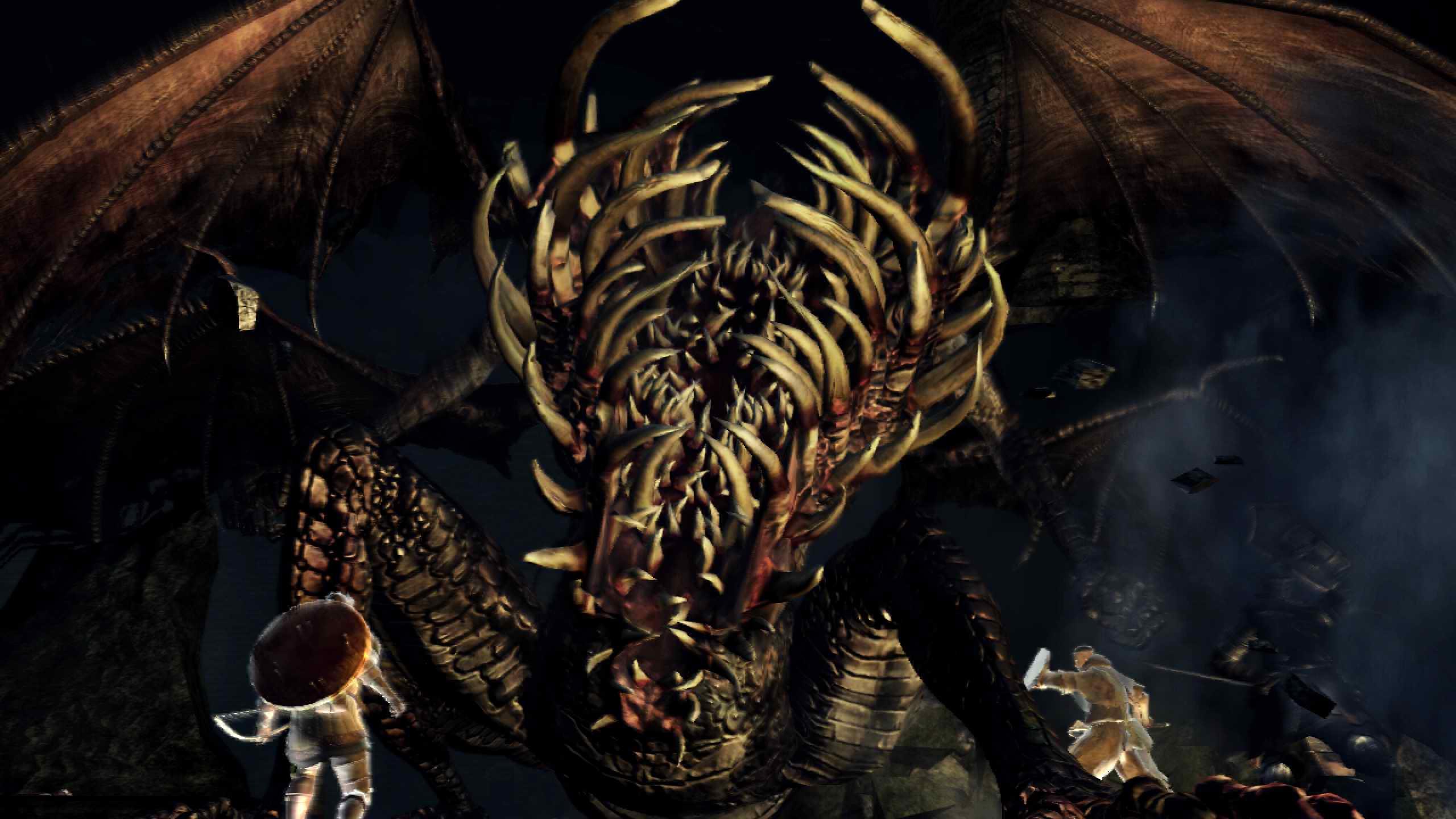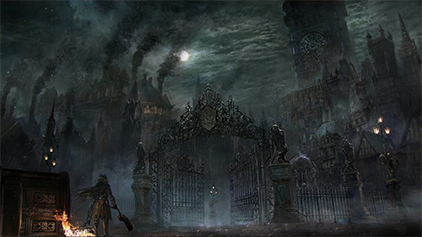Game designer Hidetaka Miyazaki today is the president of the world-famous studio FromSoftware, director of several of the companies most famous games, with some winning the Game of the Year Award, and weeks away from releasing a highly-anticipated title co-written by author George R. R. Martin. As a child, however, Miyazaki would have never imagined being one of the most influential names in the gaming industry.
In his childhood Miyazaki loved to read and was always borrowing more books from the local library. Eventually more and more of the books he read were above his level, forcing him to use his imagination to fill in the gaps where his young mind couldn’t understand the story. This part of reading became one of his most enjoyable, and he was excited by the possibilities of shaping the worlds in the books and manga he read. His family was also opposed to him playing any videogames until he was old enough for college. It might seem that Miyazaki was disadvantaged compared to his contemporaries in other game studios, but this gave him a unique opportunity to explore different elements of game design that were not available in the gaming technology at that time. Table-top games like Sorceries and Dungeons and Dragons enthralled Miyazaki in their freedom to create characters, imagine and explore complex worlds, and battle all kinds of creatures. While this would become a key element in his game design, as a child he never considered himself ambitious or felt a strong pull toward any dream. This led Miyazaki to mindlessly majoring in social science and working under a U.S. IT company, Oracle Corporation.
While working for this company, Miyazaki was introduced by two college friends to a new videogame called Ico. In playing the game Miyazaki loved the fantastical setting as it reminded him of the games that highlighted his childhood. After playing, at the age of 29, he decided to change careers completely and pursue game design. He had trouble finding places to take him because he was too old for graduate positions but too inexperienced for higher-level jobs. Eventually FromSoftware hired him as a coder, but when he heard about the game Demon’s Souls starting to fail, he found his opportunity to let out all of his creative ideas. Deomn’s Souls attracted him so much because he seen ot as an opportunity to express his creative vision in a low-stress environment, since the game was already failing. The result was the beginning of what some would call a new sub-genre of videogames. All the information he had collected over his past helped him in creating the medieval fantasy world of Demon’s Souls and its later sequels, the Dark Souls trilogy.

Gaping Dragon boss from Dark Souls, designed by Hidetaka Miyazaki
In his games, Miyazaki uses a complex, interconnected world design with few and far between checkpoints. The player must navigate through the different levels collecting weapons, armor, and items all while avoiding enemies that have been strategically placed to cause as much trouble as possible. At the end of each level is a much, much harder boss enemy whose defeat is necessary to progress. One of the first things fans noted of Demon’s Souls original release was its intense difficulty compared to other fantasy action role-playing games out there. The heightened difficulty reflects Miyazaki’s desire to create a game that was conceptually different from most others at the time. Avoiding the industry-wide trend of simplifying games for the player, Miyazaki’s games include complex fighting-mechanics, detailed level-design, and an endless number of enemies all with different fighting styles. His games represented a shift from the traditional fast-paced action and rewarded players that used patience and cunning to progress through the levels.
The other central component to all the games Miyazaki designs is the fragmented yet deep lore told through bits and pieces as the player progresses. The plot lines to the games seem confusing and disorganized at first, but as the player puts more pieces together their role in this fantasy world starts to become clearer and you get a sense of the backstories behind the other characters in the game. This information is gathered in some short cutscenes, but mostly collected from item descriptions, visual details, and conversations with NPCs that sound more like riddles. In many ways it reflects the ways that Miyazaki fell in love with reading as a child. Like his child-self, the player often won’t understand parts of the story and must use their imagination to come up with connections, relationships, and historical details that connect the larger plot points. Keeping in line with this method of storytelling, many of the detail are left unexplained or ambiguous on purpose. Miyazaki affirms that there is no concrete “happened exactly this way” story to his games because he loves to see players use their imaginations to create their own theories, just as he loved doing with the books and games of his childhood.

Miyazaki’s creative process follows a principal he calls “Total Direction.” He takes full accountability for every detail in the game, and therefore he is responsible for designing every detail. This includes character and enemy design, all text and names in the game, all item and enemy locations, level design, story and lore, artwork, and background music. To include his team members in the process he has conceptual and philosophic conversations with them to give a sense of his vision. While he maintains a central role and the bulk of the responsibility, having a team is a necessary component to designing games and Miyazaki still maintains lots of collaboration in the process. He also has been known to collaborate with other outside entities. The hit 2015 game Bloodborne was the result of a collaboration between Miyazaki and Sony wanting an exclusive for the upcoming PS4. This gave him the opportunity to create a game that was fundamentally different than the Dark Souls series. He took the DNA of those games with their overarching structure and level design, and applied it to a horror, Victorian age setting based around a hideous plague that has inflicted the city of Yharnam. His upcoming game Elden Ring is another collaborative project with fantasy author George R. R. Martin. Elden Ring is yet another new development for Miyazaki because it is his first open-world setting game where the player has completely free roam from the beginning. These collaborative opportunities have given Miyazaki new ways to explore his creativity and implement his core elements of storytelling and world design into different types of games.
Although he humbly denies it, Miyazaki has undoubtedly left a large legacy in the gaming world. He reminds anyone involved with video games of the endless possibilities when it comes to world building and game design as a whole.
Sources:
https://www.theguardian.com/technology/2015/mar/31/bloodborne-dark-souls-creator-hidetaka-miyazaki-interview
https://www.ign.com/articles/2015/02/05/inside-the-mind-of-bloodborne-and-dark-souls-creator-ign-first
https://web.archive.org/web/20210227090913/https://www.knowll.com/e/117/how-active-is-hidetaka-miyazaki-in-game-design
I really like how you emphasized how the Dark Souls series stands out, especially because of its difficulty. As a gamer, I know that this series is infamous for its art music and boss design. Great work talking about Miyazaki as a creative!
ReplyDeleteAnother fun tidbit about Miazaki is that he is also a masochist. So when he plays his games and gets brutally killed over and over again, he gets really into it.
ReplyDeleteAlso, he 100% has had a massive impact on the gaming industry! The most common phrase used when describing any sort of difficult game is that it is the "dark souls" of its genre (and has quickly become a very tired trope now).